Sea bass in salt crust is a simple recipe with impressive presentation and flavour, which has its roots way back in the mists of time. It’s impressive because there is the ceremony of inviting your guests into the kitchen to see you bringing the fish, still in its crust, out of the oven and then breaking through the salt crust, revealing a wonderful juicy fish, which creates surprise and often a round of applause! However it’s also extremely simple, because with the minimum of ingredients and easy technique you have a delicious, showstopper of a meal without needing sophisticated culinary knowledge. Sea bass in salt crust is the perfect recipe for anyone who is timid about cooking fish – this is a no-brainer recipe with guaranteed fantastic results every time!
The technique of baking in salt crust has a long history and as always, there are many theories as to when and where it first started.
One theory is that it originated with the Mongols who travelled on horseback carrying meat which had been salted to preserve it, and which they baked in the fire in its salt crust. The earliest written reference in China which is of a similar chicken recipe, is that of Dong Jing, in Guandong, during the Qing dynasty (1644-1911).
However, as is so often the case – scratch the surface a little,
and you’ll find a Greek involved!
Laura Kelley, who writes the wonderful Silk Road Gourmet blog, has found reference to a salt-crust recipe in the epic poem “Hyppathia”, written by the Greek Epicurean poet, Archestratos, who lived around 330 BC. in Sicily. Archestratos, who is considered to have written the first book of biology and dietetics in the world, highlighted the value of fish as a healthy food and espoused simple cooking methods, usually with a few selected herbs and spices, which led to a particularly light, but extremely gourmet cuisine.
It seems Archestratos was an ambassador of nouvelle cuisine in antiquity! However, the historical origin of the recipe written about by Archestratus, is presumed to have its roots even further in the past, with the Phoenicians in Carthage, who built an empire based on the trade of salt, salt-cured fish and garum (a fermented fish sauce).
Archestratos’ fish recipe recommends gutting the fish, filling the belly with a few sprigs of thyme and then coating it with thick salt mixed with a little water and egg white … which is, almost exactly our sea bass in salt crust recipe.
The wonderful thing about this recipe is that by using a salt-crust, you don’t have to worry about the fish getting too dry. The crust holds in all the juices and flavour while the fish cooks – but it doesn’t get salty either, as the fact that we cook the fish with the scales still on, prevents the salt being absorbed through the skin. The other great advantage of cooking fish in this way is that, because all the flavour is kept inside the crust, no smell escapes, so the whole house won’t smell of cooked fish.
I included this sea bass in salt crust recipe on the menu of my restaurant that I used to have on the Greek island of Tinos and it was a huge hit with our customers – Greeks and foreign visitors alike. Many people said it was the tastiest, most tender fish they had ever had! Little did they imagine how easy it is to create such a wow-factor dish with so little effort!
This is a recipe that makes the most of a good fresh fish bought the same day and suits most largish fish such as seabass, sea bream (dorade), grouper or red snapper. If you can’t find whole fish, then use a large fillet wrapped in greaseproof paper (playing the role of the fish scales) which will then sit in the salt. Just make sure that none of the fish touches the salt directly.
Ingredients
(count on 250g of deboned fish per person to work out how many fish you need)
1 x sea bass (or similar fish) 750 grams minimum or other large fish weighing in total up to 3 kilos
1.5kg – 3.5 kg coarse salt (depending on the weight and shape of fish)
optional stuffing : sprigs of fresh thyme or a few leaves of verbena or parsley
and / or 2 cloves of garlic
For serving:
3-4 tablespoons capers
a little olive oil
lemon juice
salt in flakes
Preparation:
1. Preheat the oven to 220 degrees C.
2. Prepare the fish:
Ask your fishmonger to gut the fish, remove the gills and rinse it/them. You must leave the scales on, as they are protecting the salt from over-seasoning the fish, through osmosis via the skin, while being cooked. Place the herbs – parsley or verbena – inside the fish along with 1-2 finely chopped cloves of garlic (optional) and then close it, bringing the two parts of the belly together, folding one edge on top of the other, so that salt does not enter.
3. Cover the fish with salt
Now, take the baking pan that you’re going to cook the fish in, line with greaseproof paper to make it easy to clean (you’ll thank me later!) and pour in a layer of salt to create a base on which the fish will sit. Place the fish on the salt base and cover it/them completely with the remaining salt , sprinkling with just a bit of water, so that the salt sticks to the sides, making sure there are no gaps. Put the fish in the preheated oven.
Note: The original recipe called for a mixture of salt and egg white to ensure that the salt makes a solid crust. I have experimented with plain salt selectively sprinkled by water and found that it gives exactly the same result without the fuss of beating egg whites and mixing them with salt. You might end up using a bit more salt because it is not as malleable as the mixture with egg whites, but a few minutes in the oven and the salt crust becomes airtight!
4. Baking – Filleting:
Allow 25 minutes for 1 sea bass fish weighing 700-800g, 35 minutes for one or two fish totalling 1.5 kg or 45 minutes for three fish totalling 2.2kg.
Once the fish is ready, take the pan to a worktop in the kitchen (it’s a bit messy to do it in the dining room) and, using a sharp knife and a tenderising mallet or regular hammer, break the hardened salt crust, putting the pieces in another bowl to be thrown away (see video above).
Remove all of the salt from the upper side of the fish. Pick the fish up carefully out of the crust and transfer it to a serving dish to fillet it and serve.
Serving:
Serve at the table onto warmed plates. You could accompany it with steamed/grilled vegetables or a rocket salad with olive oil and lemon juice. Place a few capers on top of the filleted fish, drizzle a little olive oil over it, and sprinkle a few salt flakes. The ideal wine would be a white dry and very sharp Assyrtiko from the island of Santorini.


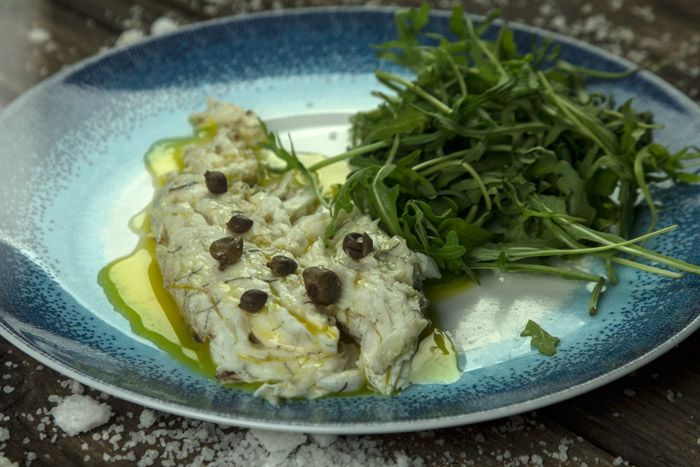

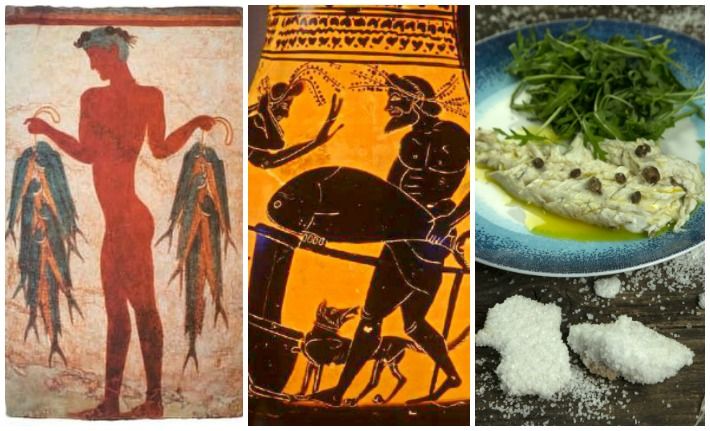
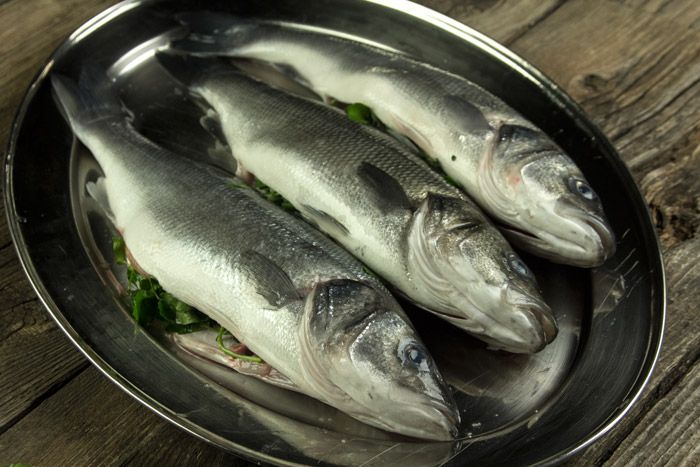

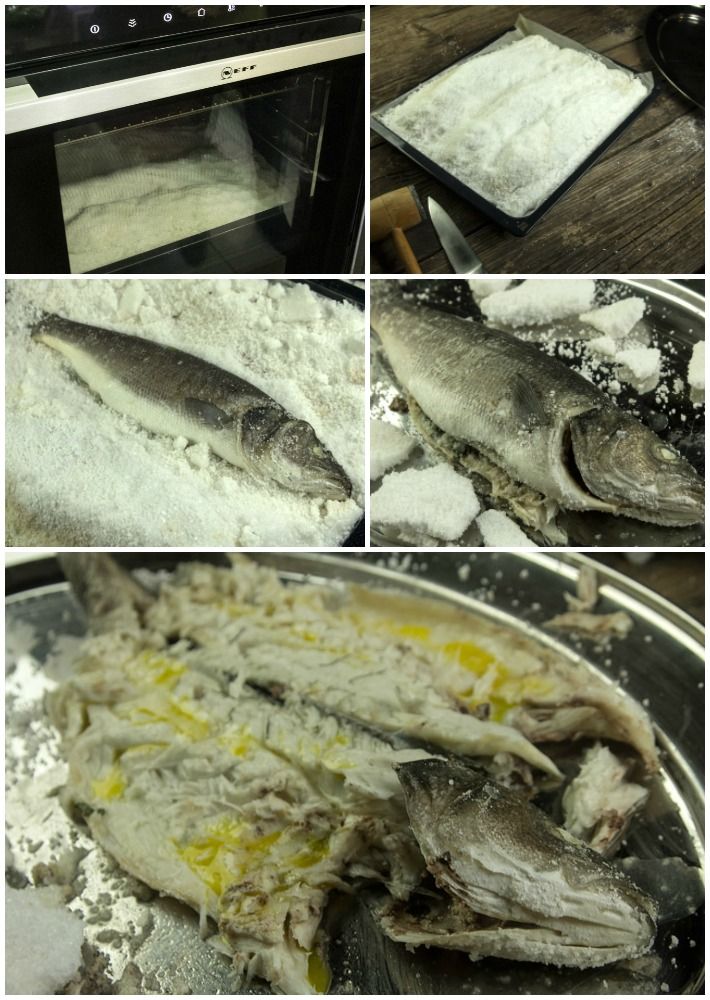
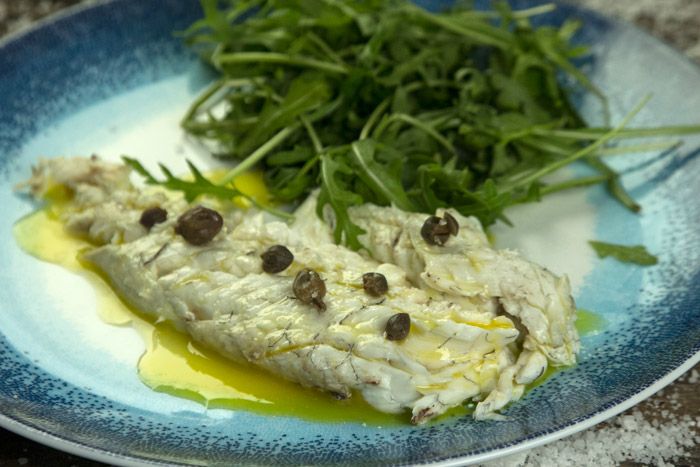



Baghead Kelly
Fascinating, we think of our ancestors as somehow being less sophisticated but clearly not. Thanks for the history/gastronomy lesson.